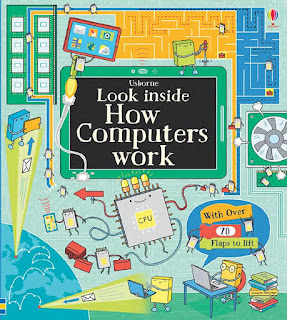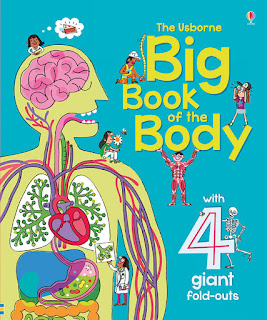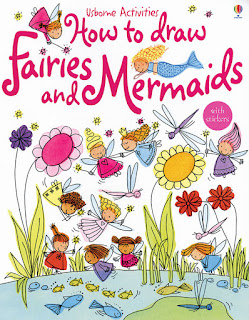The Common Core state standards are attempting to correct the imbalance of fiction and non-fiction reading by emphasizing non-fiction texts in elementary school language arts instruction.
Research shows that students are reading an average of 25 minutes per day at home, and of those 25 minutes, only 4 minutes are spent reading non-fiction texts (Rideout, Foehr, & Roberts, 2010).
Other studies show that children's fiction texts outsell children's non-fiction texts by 4 to 1 (millet, 2010), which suggests that children aren't reading non-fiction because those texts aren't as easily accessible as fiction texts. Prior to the Common Core state standards, roughly 10% of primary texts in classrooms were non-fiction (Duke, 2000). Common Core's push for non-fiction texts in classrooms is opening the doors to a new gateway for learning.
With so many electronics and multimedia options, shouldn't parents just be happy that their kids are reading? Students who read more tend to learn more vocabulary, become more proficient readers, find reading more enjoyable, and thus continue to read more and become ever better readers (Stanovich, 1986), so does it really matter what they're reading? Should we be ripping Diary of a Wimpy Kid and Harry Potter out of their little hands? The answer to that is complex. Let's take a look at what non-fiction text is, what is has to offer, and how we use it.
What is non-fiction text?
Non-fiction text gives information, unlike fiction text that tells a story. There are two types of non-fiction text. One type is called literary non-fiction, which includes biographies, autobiographies, and essays. The information is intended to inform the reader, but it's told through a story-like way. The other type is called informative non-fiction, and it includes articles, interviews, how-to reading, and guides.
Non-fiction text is structurally different from narrative text.
Non-fiction and fiction text have two completely different structures. Non-fiction text is typically organized by ideas, and each paragraph typically has its own idea. The sentences within it offer details and explanations in an organized manner that help the reader make sense of the new information. It uses headings, graphs, charts, and other text elements not often found in the narrative fiction to help guide the reader's understanding. Here's an example:
This is a paragraph that has a main idea and three details. Detail one is the first part of the main idea. For example, this example helps explain detail one. Next, detail two is the second part of the main idea. According to an expert, this statistic helps explain detail two. Finally, detail three tells even more about the main idea. The three steps for detail three are one, two, three. Details one, two, and three help further explain the main idea.
Here's color-coded example of a paragraph organized by main idea, detail, and example/explanation/expert opinion.
If you're hosting a party and you're looking for a great dessert to offer, consider making an ice cream sundae bar. First, guests can scoop their ice cream into a bowl. Have a variety of flavors to choose from, such as vanilla, chocolate, and strawberry. Next, they can pour a sauce over their ice cream. According to The Top Tens, caramel and hot fudge are the best-selling sauces for ice cream, so your party guests should like them. Last, have them add toppings to their ice cream sundae. Offer crushed up candy bars, cookies, and sprinkles to delight everyone's palette. Ice cream sundaes are a great dessert to offer at parties because everyone can make their own according to their personal preferences.
The more non-fiction text that readers read, the easier it becomes to read it, understand it, and condense the information into an outline:
Ice cream sundae bar
- ice cream: vanilla, chocolate, and strawberry
- sauce: caramel and hot fudge
- toppings: crushed up candy bars, cookies, and sprinkles
In contract, fiction text offers characters, a setting, and a plot. Somebody somewhere wants something, but they have to go through a few obstacles (and often fight against a bad guy) before they get it and the whole world can peacefully sleep at night. While fiction is great for learning how to make inferences, compare characters at the beginning and end of a story, see cause and effect relationships, etc., it neglects several comprehension skills that we all need to be fluent readers.
Non-fiction text makes up for 50% of reading instruction in grades K-5.
As students approach third grade, they are preparing for content-specific learning. Students are expected to be able to decode (accurately read aloud) words and use background knowledge to understand information (for example, a child needs to know that California is a state in the USA before they can fully understand 4th grade-Californian- and 5th grade-American- history). Starting in third grade, students begin reading to learn as they digest science and social studies texts. They learn about the world around them, how things work, and where we came from. They learn about the birth of our nation, about the relationship our country has with other countries around the world, and start to find their place in the world. Our students are now being asked to spend 50% of their classroom time reading non-fiction text, and it's important that parents are helping their children read non-fiction text at home.
Non-fiction text is the basis of future, personal-interest reading.
As we grow up, we begin asking more questions about the world around us. We read news articles, we pull up blogs about fashion trends and the housing market, we read reports about finances and sales, and we look up medical information about fevers when our babies have fevers at 2am. With so much information on the internet, it's important that we show our students and our children how to navigate that information and differentiate between impartial, factual information and slanderous, opinionated information.
Non-fiction comprehension is assessed on the SAT and ACT tests in high school.
The ACT is broken down into five parts: English, Math, Reading, Science, and Writing. Reading is required for all five parts. Three of the four reading passages are non-fiction, many of the math problems are written as word problems, the science portion ask test-takers to read and analyze passages with charts, graphs, and tables, and the writing portion proposes a few opinions about a topic before asking the test-taker to take and present an opinion. The SAT has a different format, and it asks students to demonstrate the ability to read and critically analyze non-fiction text, but it does not include the science portion.
Non-fiction comprehension is a significant portion of learning in college and trade school education.
Two of a student's first four years of college are spent taking general education courses, many of which require large amounts of reading. The only times I remember reading fiction in college were for a medieval world history course that blended literature with history, for a series of sociology courses that looked at the way individuals interact in society, for a microbiology course (we had to read a novel about an Ebola outbreak), and for an English literature course. Other than that, all of my reading material was non-fiction text that has to be read, understood, outlined, consolidated and analyzed, and memorized.
Non-fiction comprehension is vital to career development.
When you attend professional development training for your career, there's a good chance that you're going to be reading non-fiction text. It might be a financial report, a summary of findings, a how-to manual, or a step-by-step instruction guide.
What should my kids be reading at home?
There is a PLETHORA of amazing non-fiction text that you can read with your kids that isn't stuffy or boring. Reading non-fiction at home is super fun because you can use the table of contents and index to find topics of interest and skip around in books. You can learn more about something that interests your child, you can show them more about what you do at work, you can explain how the world works, and you can give them the tools they need to be lifelong learners.
You can hop into any local or online bookstore to find great non-fiction books about ANYTHING, but some of my favorite books right now are from Usborne Books & More. They're high-quality books that are delivered to your door, and they're jam-packed with tons of information and engaging photos.
Here's what we love from Usborne Books & More for non-fiction:
My Very First Book About (3 years+)
First Sticker Books (4 years+)
Look Inside (5 years+)
Lift-The-Flap Question and Answer (4 years+)
Big Books (4 years+)
Beginning Readers (6 years+)
Discovery Adventures (8 years+)
History (8-11 years old)
Starting Point Science (6 years+):
See Inside (7 years+):
What's All About (8 years+)
Illustrated Dictionaries (12 years+)
There are several different books in each of these categories, so if these topics aren't of interest to your little readers, browse around and see what else Usborne Books & More offers. Some of these books are Accelerated Reader books, which means you can read them for classroom AR points. Some are even Internet-linked books, so you can scan the QR code on the page with your phone and it takes you to a website with a video and/or more information. How cool is that?!





















































